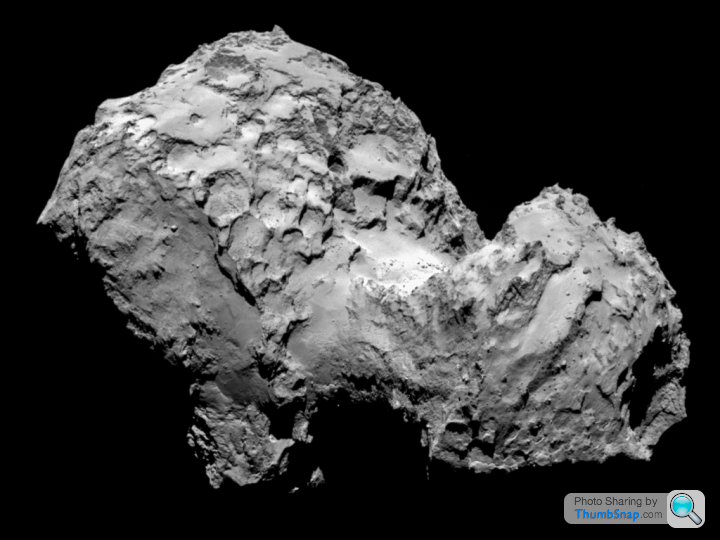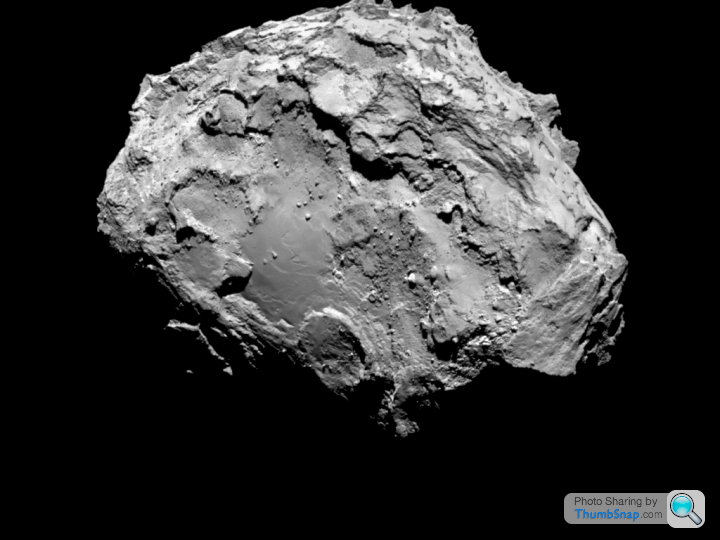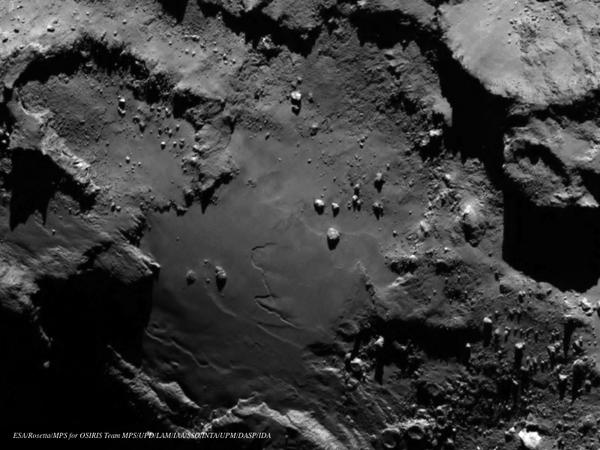Discussion
Live coverage here http://www.livestream.com/eurospaceagency?utm_sour...
Fascinating mission, have been following it on and off since launch.
It'll be interesting to see the ducks "neck" close up and find out if this is a true contact binary or just a weird shape, either way its an incredible looking object and the mission, especially the landing is audacious- good luck to them.
It'll be interesting to see the ducks "neck" close up and find out if this is a true contact binary or just a weird shape, either way its an incredible looking object and the mission, especially the landing is audacious- good luck to them.
Moonhawk said:
Awesome mission. Some new closeup pics posted on ESA's website. Looks like a very tortured surface. Be interesting to see what happens as it approaches the sun and comes to perihelion next August.


When I first saw those images I assumed they were from a radar as they reminded me of the topography images you used to see on Time Team, amazing that they're real images in normal sunlight.

Edited by Moonhawk on Wednesday 6th August 12:09
I love seeing the audacious missions like this working, getting something into orbit of something that small is an incredible achievement itself, if the lander works flawlessly then I guess it's going to be up there with our top technological achievements.
I've been following this for about six months and it's fascinating. The maths involved in getting the thing in line with it over ten years blow my tiny mind.
It's a good Twitter feed if you're interested, now posting close-ups of the comet - https://twitter.com/ESA_Rosetta

It's a good Twitter feed if you're interested, now posting close-ups of the comet - https://twitter.com/ESA_Rosetta

MOTORVATOR said:
Surely can't be zero or they wouldn't be able to hold an orbit for the probe?
It's currently unknown - but we can get an idea.According to Wikipedia - it has an estimated escape velocity of 0.46 m/s. Compare that to the earth's escape velocity of 11.186 km/s
So around 25,000 less.
Moonhawk said:
It's currently unknown - but we can get an idea.
According to Wikipedia - it has an estimated escape velocity of 0.46 m/s. Compare that to the earth's escape velocity of 11.186 km/s
So around 25,000 less.
Taken from http://www.esa.int/Our_Activities/Space_Science/Ro...According to Wikipedia - it has an estimated escape velocity of 0.46 m/s. Compare that to the earth's escape velocity of 11.186 km/s
So around 25,000 less.
What is the gravity on 67P/Churyumov-Gerasimenko's surface, compared with that on Earth?
Comet 67P/Churyumov-Gerasimenko is so small that its gravitational pull is several hundred thousand times weaker than on Earth. For this reason, the Rosetta lander will touch down at no more than a walking pace. It will need a harpoon to safely anchor it to the comet’s surface and prevent it from bouncing back into space.
Laplace said:
For this reason, the Rosetta lander will touch down at no more than a walking pace. It will need a harpoon to safely anchor it to the comet’s surface and prevent it from bouncing back into space. [/i]
Why land then harpoon? Could they not get close, then harpoon it and reel themselves in to the surface? Sorry in advance if that's stupid, I don't have much knowledge of this topic .

el stovey said:
Why land then harpoon? Could they not get close, then harpoon it and reel themselves in to the surface?
Sorry in advance if that's stupid, I don't have much knowledge of this topic .
I'm guessing - Sorry in advance if that's stupid, I don't have much knowledge of this topic .

1) throwing a harpoon out forwards will make the probe go backwards, or at least slow down a bit too much
2) weight is everything when it comes to space probes and the mission controllers would rather have .5kg of sensors rather than .5kg of rope.
Gassing Station | Science! | Top of Page | What's New | My Stuff




